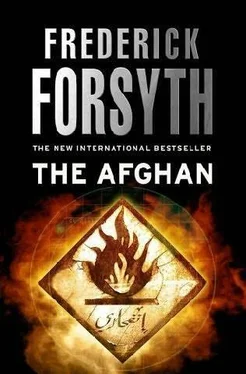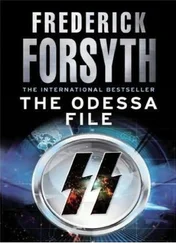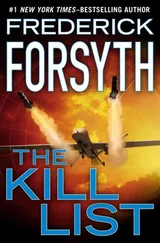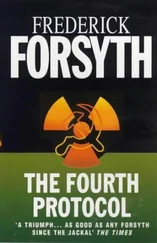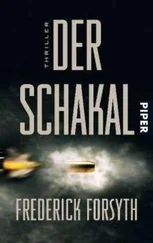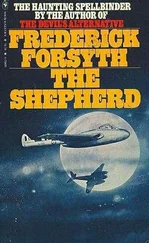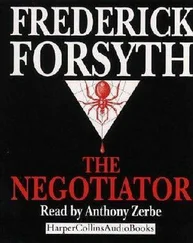After two weeks, enthusiasm for the hunt for a seemingly nonexistent ghost ship was starting to fade, and the mood came from Washington. How much time, trouble and treasure could be expended on a vague scrawl on a boarding card stuffed into a dive bag on an island no one had ever heard of? Marek Gumienny had flown to London to confer with Steve Hill when the SIS expert in maritime terrorism, Sam Seymour, called up from the Ipswich HQ a Lloyd’s shipping list and made matters worse. He had changed his mind. Hill ordered him to London to explain.
“With hindsight,” said Seymour, “the option of Al Qaeda seeking to use a huge blocking ship to close down a vital sea highway to wreck global trade was always the likeliest option. But it was never the only one.” “What makes you think it was the wrong way to go?” asked Marek Gumienny. “Because, sir, every single vessel in the world big enough to achieve that has been checked out. They are all safe. That leaves options two and three, which are almost interchangeable but with different targets. I think we should now look at option three: mass murder in a seashore city. Bin Laden’s public switch to economic targets could have been a hoax, or he has changed his mind.” “Okay, Sam, convince me. Steve and I both have political masters demanding results or our heads. What kind of ship if not a blocking vessel?” “For threat number three, we do not look at the ship so much as the cargo. It need not be large so long as it is absolutely deadly. Lloyd’s have a hazardous cargo division-obviously, it changes the premium.” “Ammunition ship?” asked Hill. “Another Halifax wipeout?” “According to the boffins, military ordnance simply does not explode like that anymore. The modern stuff needs huge provocation to go off inside the hull. Youd get worse from an exploding firework factory, but it would not begin to deserve the term ‘spectacular,’ as in 9/11. The Bhopal chemical leak was far worse, and that was dioxin, a deadly weed killer.”
“So, a tanker truck driving dioxin up Park Avenue, and completing the job with Semtex,” suggested Hill.
“But these chemicals are closely guarded inside their manufacturing and storage base,” objected Gumienny “How do they get the cargo with no one noticing?” “And we were specifically told a ship would be the carrier,” said Seymour. “Any hijacking of such a cargo would bring immediate retaliation.” “Except in some parts of the Third World that are virtually lawless,” said Gumienny.
“But these ultralethal toxins are not made in such places anymore, not even for labor-cost savings, sir.”
“So, we are back to a ship?” said Hill. “Another exploding oil tanker?” “Crude oil does not explode,” Seymour pointed out. “When the Torrey Canyon was ripped open off the French coast, it took phosphorus bombs to persuade the oil to ignite and burn off. A vented oil tanker will only cause ecodamage, not mass murder. But a quite small gas tanker could do it. Liquid gas, massively concentrated for transportation.”
“Natural gas, liquid form?” asked Gumienny. He was trying to think how many ports in the USA imported concentrates of gas for industrial power, and the number was becoming unsettling. But surely these docking facilities were miles from massed humanity.
“Liquid natural gas, known as LNG, is hard to ignite,” Seymour countered. “It is stored at minus 256 Fahrenheit in special double-hulled vessels. Even if you took one over, the stuff would have to leak into the atmosphere for hours before it became combustible. But according to the eggheads, there is one that frightens the hell out of them. LPG Liquid petroleum gas. “It is so awful that a quite small tanker, if torched within ten minutes of catastrophic rupture, would unleash the power of thirty Hiroshima bombs, the biggest nonnuclear explosion on this planet.”
There was total silence in the room above the Thames. Steve Hill rose, strolled to the window and looked down at the river flowing past in the April sunshine. “In laymen’s language, what have you come here to say, Sam?” “I think we have been looking for the wrong ship in the wrong ocean. Our only break is that this is a tiny and very specialist market. But the biggest importer of LPG is the USA. I know there is a mood in Washington that all this may be a wild-goose chase. I think we should go the last mile. The USA can check out every LPG tanker expected in her waters, and not just from the Far East. And stop them until boarded. From Lloyd’s, I can check out every other LPG cargo worldwide, from any point on the compass.”
Marek Gumienny took the next flight back to Washington. He had conferences to attend and work to do. As he flew out of Heathrow, the Countess of Richmond came round Cape Agulhas, South Africa, and entered the Atlantic.
***
She had made good speed, and her navigator, one of the three Indonesians, estimated the Agulhas Current and the north-running Benguela Current would give her an extra day, and plenty of time to reach her intended destination. Farther out into the seas off the Cape, and on into the Atlantic, other ships were moving from the Indian Ocean to head for Europe or North America. Some were huge ore carriers, others general cargo ships bringing the ever-increasing amount of Asian manufactures to both Western continents as marketers “outsourced” manufacturing to the low-cost workshops of the East. Others still were supertankers too big even for the Suez Canal, their computers following the hundred-fathom line from the east to the west while their crews played cards. They were all noted. High above, out of sight and mind, the satellites drifted across inner space, their cameras relaying back to Washington every line of their structure and the names on their sterns. More, under recent legislation they all carried transponders emitting their individual call sign to the listening ears. Each identification was checked out, and that included the Countess of Richmond, vouched for by Lloyd’s and Siebart and Abercrombie as being a Liverpool-registered small freighter bringing a legitimate cargo on a foreseen route from Surabaya to Baltimore. For the USA, there was no point in probing deeper; she was thousands of miles from the American coast. Within hours of the return of Marek Gumienny to Washington, changes were made to the U.S. precautions. In the Pacific, the check-out-and-examine cordon was extended to a thousand-mile band off the coast. A similar cordon was established in the Atlantic from Labrador to Puerto Rico, and across the Caribbean Sea to the Yucatan Peninsula in Mexico.
Without fuss or announcement, the emphasis abandoned the giant tankers and freighters, which by then had all been checked, and looked hard at the scores of smaller tankers that ply the seas from Venezuela to the Saint Lawrence River. Every EP-3 Orion available was pressed into coastal patrol, flying over hundreds of thousands of square miles of tropical and subtropical sea looking for small tankers, and especially for those bearing gas.
American industry cooperated to the full, supplying details of every cargo expected, where and when due. The data from industry was cross-indexed with the sightings at sea, and they all checked out. Gas tankers were permitted to arrive and dock, but only after taking on board a posse of U.S. Navy, Marine or Coast Guard personnel to escort them in, under guard, from a point two hundred miles out.
***
The Dona Maria was back in Port of Spain when the two terrorists she harbored in her crew saw the signal they had been briefed to expect. As instructed, when they saw it they acted.
The Republic of Trinidad and Tobago is a major supplier of petrochemical products across a wide spectrum to the United States. The Dona Maria was berthed at the offshore island, the tank farm where tankers large and small could approach, take cargo on board and leave without ever approaching the city itself.
Читать дальше
